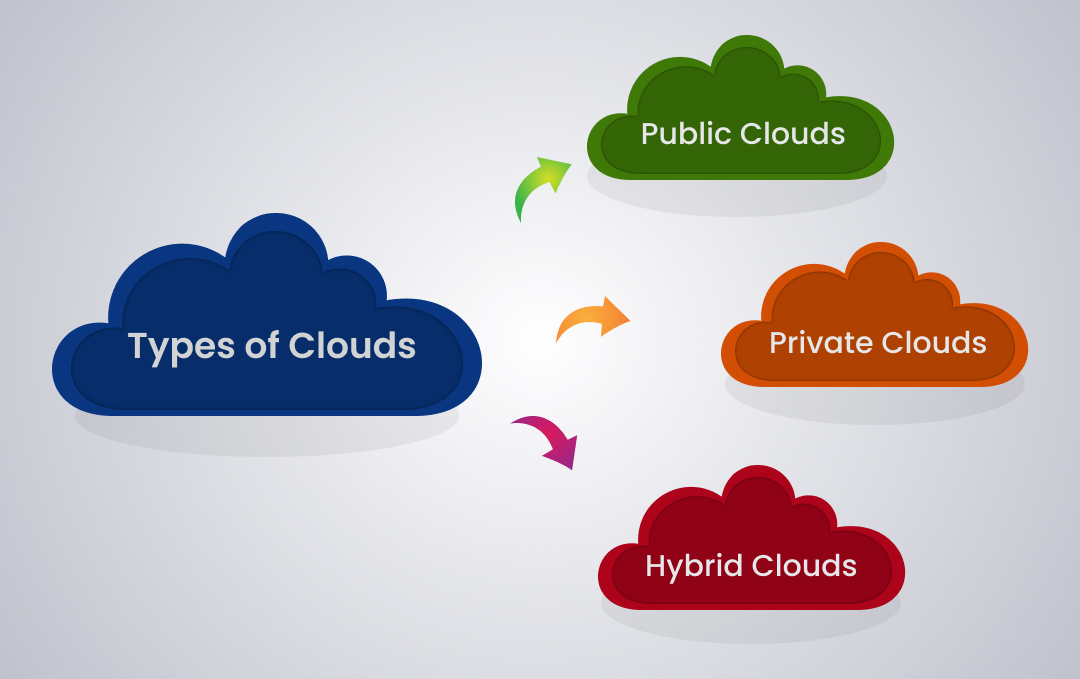LinkDaddy Cloud Services Revealed: Specialist Strategies for Cloud Services Press Release Quality
Wiki Article
Simplify Your Infrastructure With Cloud Solutions
As businesses navigate the ever-evolving landscape of innovation and information management, the role of cloud solutions in streamlining facilities has actually come to be increasingly popular. The appeal of structured procedures, enhanced performance, and improved resource allocation through cloud services is obvious. Nevertheless, the journey towards a more active and economical IT infrastructure includes greater than just migrating to the cloud. It needs a tactical strategy and a deep understanding of the nuances of cloud adoption. So, exactly how can companies efficiently browse this transition and really open the capacity of cloud solutions for simplifying their facilities?Benefits of Cloud Provider
Cloud solutions provide a streamlined strategy to handling IT infrastructure, giving services with cost-efficiency, adaptability, and scalability. One of the vital advantages of cloud solutions is the scalability they offer. Services can easily scale their resources up or down based upon need, ensuring they just pay for what they use. This adaptability is especially helpful for services with rising and fall requirements or those experiencing growth.Additionally, cloud solutions remove the demand for organizations to purchase costly hardware and software program. This cost-efficiency is a considerable advantage, particularly for little to medium-sized business aiming to reduce in advance costs. By utilizing cloud services, services can access high-grade IT sources without the substantial price connected with traditional framework arrangements.
In addition, cloud services give companies with the versatility to access their data and applications from anywhere with an internet connection. This degree of accessibility improves collaboration amongst teams, makes it possible for remote work, and raises total efficiency. The adaptability used by cloud services encourages services to adjust swiftly to transforming market problems and consumer demands.
Cost Financial Savings and Scalability
In enhancement to the operational benefits highlighted earlier, the assimilation of cloud solutions into a business's facilities yields significant price savings and enhanced scalability. Cloud solutions use a pay-as-you-go model, permitting organizations to scale resources up or down based upon existing needs, thereby avoiding the costs related to preserving excess capability. This versatility enables business to adjust swiftly to rising and fall needs without incurring unneeded expenditures.Furthermore, cloud services remove the need for in advance investments in hardware and software program, decreasing capital investment. General expenses are additionally decreased as firms no longer require to take care of and preserve physical web servers, leading to reduced power intake and IT staffing costs. Additionally, cloud solutions offer automatic updates and maintenance, making certain that the facilities stays safe and current without calling for hand-operated treatments.
Enhanced Safety And Security Measures
When incorporating cloud solutions into a firm's infrastructure to guarantee and protect sensitive data compliance with industry guidelines,Carrying out stringent safety procedures is critical. Cloud solution suppliers provide improved safety and security attributes such as data encryption, firewall software security, and multi-factor verification to mitigate cybersecurity dangers. Encryption aids secure information both at rest and en route, making certain that only authorized users can access delicate information. Firewall softwares function as a barrier between exterior dangers and inner networks, surveillance and managing outbound and content incoming network website traffic. Multi-factor authentication includes an added layer of safety by calling for individuals to give several forms of verification before accessing the cloud services.Furthermore, routine safety audits and conformity analyses help recognize susceptabilities and make sure adherence to sector standards. Companies can additionally gain from features like automatic safety updates and real-time danger tracking provided by cloud provider. By prioritizing safety actions and remaining positive in attending to potential threats, businesses can confidently utilize cloud services while shielding their beneficial information from unauthorized accessibility or breaches.
Transitioning to Cloud Infrastructure
To effectively integrate cloud services right into a business's infrastructure, a structured technique that attends to the change towards cloud-based options is essential. Transitioning to shadow framework includes careful preparation and implementation to ensure a smooth movement procedure. The very first action is to examine the current facilities and figure out which systems and applications appropriate for movement to the cloud. This evaluation must think about factors such as information level of sensitivity, conformity needs, and performance needs.Once the evaluation is complete, a migration method should be created. This method should lay out the timeline, sources, and duties for moving each part to the cloud. this It is important to connect this strategy plainly to all stakeholders to guarantee positioning and reduce interruptions during the change.
Throughout the migration testing, process and surveillance are essential to determine and attend to any type of problems quickly. Regular checkpoints should be established to track development and make required modifications. Additionally, training for staff members on using cloud services should be offered to make sure an effective transition and make best use of the benefits of the brand-new framework.
Ideal Practices for Cloud Adoption
Effective fostering of cloud solutions rests on the tactical placement of service objectives with technical abilities and business preparedness. To guarantee a smooth change to the cloud, companies need to begin by conducting an extensive assessment of their existing facilities and determining which work are best suited for cloud movement. It is critical to entail crucial stakeholders from various divisions in the decision-making procedure to get buy-in and deal with any type of concerns beforehand.Another finest practice for cloud fostering is to focus on safety and security and compliance. Organizations must meticulously examine the security measures used by cloud solution providers and make sure that their information is protected according to market requirements and regulative demands. Implementing durable data file encryption, access controls, and routine safety and security audits can assist minimize threats related to cloud fostering.

Conclusion

As services navigate the ever-evolving landscape of technology and information management, the duty of cloud services in simplifying infrastructure has ended up being significantly prominent - universal resource cloud Service. Exactly how can services efficiently browse this transition and truly unlock the possibility of cloud solutions for streamlining their facilities?
Cloud solutions use a structured technique to handling IT framework, offering companies with scalability, flexibility, and cost-efficiency. By utilizing cloud services, organizations can access high-grade IT sources without the large cost tag linked with typical framework configurations.
To guarantee a smooth change to the cloud, organizations ought to begin by conducting a comprehensive analysis of their current framework and recognizing which workloads are best matched for cloud movement.
Report this wiki page